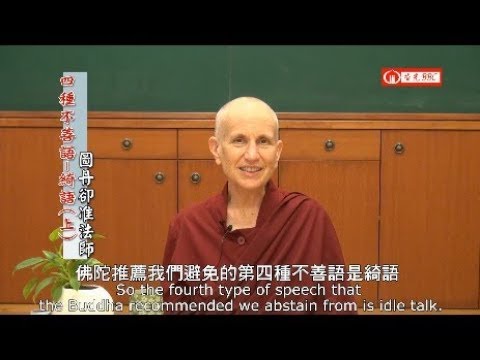Review of three kinds of dependent arising
The text turns to training the mind on the stages of the path of advanced level practitioners. Part of a series of teachings on the Gomchen Lamrim by Gomchen Ngawang Drakpa. Visit Gomchen Lamrim Study Guide for a full list of contemplation points for the series.
- Examples of direct perceivers versus conceptual minds
- Understanding causal dependence
- Mutual dependence and mere dependent designation
- Explanation of the rope and snake example
- What makes something mine?
137 Gomchen Lamrim: Review of Three Kinds of Dependent Arising (download)
Contemplation points
- Spend some time differentiating between direct perception (perceiving the raw data of objects with your visual, auditory, gustatory, olfactory, and tactile consciousnesses) and perception through the conceptual mind (what you are thinking or remembering about those objects). Reflect on your experience:
- Does the conceptual image you have match the detail of the direct perception? For instance, when you’re eating, pay attention to what you think about the food, what your expectations are. Then compare that with the actual experience of the taste.
- While the conceptual mind is good for learning, it can trap us into doing things we don’t want to do. What afflictions arise due to your conceptual thought about an object or experience? How might those afflictions prompt you to act contrary to your aspirations?
- Resolve to make space in your mind for this kind of investigation on a regular basis.
- Causal dependence addresses how effects depend on causes. Even though we know about causal dependence and live our lives more or less in alignment with it, we’re still surprised when things change. Why do you think this is so? What can you do to deepen your awareness of causal dependence?
- Mutual dependence addresses how everything we see is designated and comes into existence dependent on other things (long and short, big and small, parent and child, car and car parts…). Reflect on some other examples of this in your life, perhaps some identities that you hold.
- Mere dependent designation addresses how things don’t have any essence that makes them what they are; that they become what they are because the conceptual mind puts the parts together, gives them a name, and assigns a function. Reflect:
- Things appear to us as if they have an essence that makes them what they are. Using some of the examples from the teaching, or some of your own, take some time to consider how there is nothing inside the object or person that makes them that thing, that in dependence on its parts being together in a particular way, we label them.
- Expand you investigation now to investigate your sense of “I.” “I” came about simply because there is a body and mind, and on the basis of having some particular arrangement and relationship, we give the name “I.” But when we look through the basis of designation for the “I,” we can’t find anything that is “I.” Take some time with this.
- Someone else wouldn’t call you “I.” They would call you “YOU.” So you can see how the object depends on how we conceptualize and label, but nowhere IN that basis of designation is the object we are designating. Again, take some time with this.
- Consider: The point of this exercise is to recognize that there is a mistaken appearance. We, like everything else we perceive, appear to exist from our own side, but do not.
- Resolve to spend some time differentiating between the basis of designation and the designated object. Does this make you experience the object or think about yourself in a different way than before?
Venerable Thubten Chodron
Venerable Chodron emphasizes the practical application of Buddha’s teachings in our daily lives and is especially skilled at explaining them in ways easily understood and practiced by Westerners. She is well known for her warm, humorous, and lucid teachings. She was ordained as a Buddhist nun in 1977 by Kyabje Ling Rinpoche in Dharamsala, India, and in 1986 she received bhikshuni (full) ordination in Taiwan. Read her full bio.


